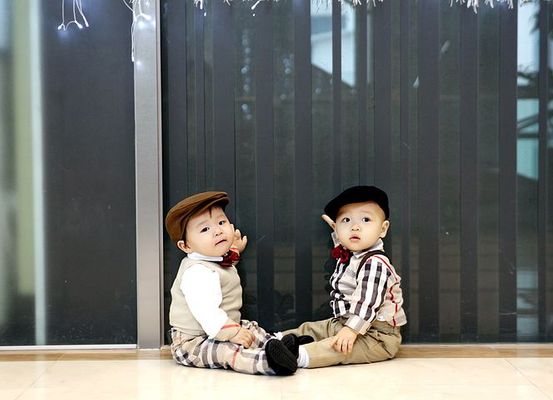2.1.5
A Child's First Year & Consonant Acquisition
Phonology - A Child's First Year
Phonology - A Child's First Year
Even before a child is born, they can start to ‘hear’ sounds.


17-week-old-foetus
17-week-old-foetus
- From around seventeen weeks, a foetus can hear sounds in utero. This is often shown when a child reacts more when they hear a certain voice or when they hear a certain piece of music.
- This is often shown again after birth.


Mehler
Mehler
- In 1988, Mehler found that French babies had a stronger reaction to French sounds at four days old than they did to English, Spanish or Italian.
- This proved that babies become accustomed to their native language before birth.
Phonology - Pre-Lingual Stage
Phonology - Pre-Lingual Stage
Before a child can pronounce words, they go through what is known as the ‘pre-lingual’ stage. This is formed of six key stages.


Word of warning
Word of warning
- As a word of warning, all theories/concepts which you learn in this module are rough guides and all children are subject to individual variation.


Stage 1: Biological noises – 0-2 months
Stage 1: Biological noises – 0-2 months
- This involves a lot of crying (which usually takes the form of the long a sound (/a:/)).
- The child begins to gain control of their air stream.
- This is universal – parents of all nationalities can recognise the different types of crying. As a result, this isn’t really a ‘language’.


Stage 2: Cooing and laughing – 2-5 months
Stage 2: Cooing and laughing – 2-5 months
- We begin to see a control of vocal chords, but the sounds are meaningless, like ‘coo’,’ hoo’ and ‘ga’.
- Tongue control is evident when coos get strung together.


Stage 3: Vocal play – 5-8 months
Stage 3: Vocal play – 5-8 months
- The child begins to experiment with different vowel and consonant sounds.
- The child begins to play with pitch.
- There is no meaning behind these noises – they are playing.
- Parents may respond very positively to certain sounds and as a result, the child may produce these again and again.


Stage 4: Babbling – 6-12 months
Stage 4: Babbling – 6-12 months
- After starting, babbling happens for a long time, permeating even into the holophrastic stage.
- Consonants begin to get linked to vowels. There is still no meaning to these sounds.
- Parents will react if ‘da’ or ‘ma’ is formed (coincidently).
- There are two types of babbling – reduplicated and variegated.
- Reduplicated babbling happens when the sound is repeated. For example, ‘mamama’.
- Variegated babbling happens when the sound is differed, like ‘dabama’.


Stage 4: Babbling (cont.)
Stage 4: Babbling (cont.)
- To start with, a child will try as many new sounds as they can – this is called phonemic expansion.
- At roughly 9/10 months, the child narrows their range to those found in their native language. This is called phonemic contraction.
- At this point, a parent can recognise a child of the same nationality.


Stage 4: Babbling (cont.)
Stage 4: Babbling (cont.)
- A child gains more control over their body and face at this point, and so paralinguistic features develop (gesturing and facial expressions).
- A child also develops intonation as of real speech. This includes rising intonation at the end of the interrogative mood.


Stage 5: Melodic utterances – 9-18 months
Stage 5: Melodic utterances – 9-18 months
- A child lets out utterances containing rhythm.
- Tone is developed.


Stage 6: protowords – around a year
Stage 6: protowords – around a year
- A child starts to use protowords. These are utterances which resemble words and are word-like ‘dap’ for a phone. These protowords would not make sense outside of the context of primary caregivers.
1Language Levels
1.1Assessment Objectives
1.2Lexis
1.2.1Introduction
1.2.2Common, Proper, Abstract & Concrete Nouns
1.2.3Collective Nouns
1.2.4Adjectives
1.2.5Main, Auxiliary & Copular Verbs
1.2.6Dynamic & Stative Verbs
1.2.7Transitive, Intransitive, Active & Passive Verbs
1.2.8Mood of Verbs
1.2.9Adverbs
1.2.10Personal, Possessive & Reflexive Pronouns
1.2.11Relative & Demonstrative Pronouns
1.2.12Determiners
1.2.13Conjunctions
1.2.14Synonyms, Antonyms & Phonological Features
1.2.15End of Topic Test - Lexis
1.3Grammar
1.4Semantics & Pragmatics
1.5Discourse Structure, Graphology & Orthography
2Language, The Individual & Society
2.1Children’s Language Development
2.2Children's Language Development - Theories
2.3Literacy Development: Reading
3Language Diversity & Change
3.1The Importance of Gendered Language
3.2Social Groups
3.3Occupational Groups
3.4Accents & Dialects
3.5Language Change
Jump to other topics
1Language Levels
1.1Assessment Objectives
1.2Lexis
1.2.1Introduction
1.2.2Common, Proper, Abstract & Concrete Nouns
1.2.3Collective Nouns
1.2.4Adjectives
1.2.5Main, Auxiliary & Copular Verbs
1.2.6Dynamic & Stative Verbs
1.2.7Transitive, Intransitive, Active & Passive Verbs
1.2.8Mood of Verbs
1.2.9Adverbs
1.2.10Personal, Possessive & Reflexive Pronouns
1.2.11Relative & Demonstrative Pronouns
1.2.12Determiners
1.2.13Conjunctions
1.2.14Synonyms, Antonyms & Phonological Features
1.2.15End of Topic Test - Lexis
1.3Grammar
1.4Semantics & Pragmatics
1.5Discourse Structure, Graphology & Orthography
2Language, The Individual & Society
2.1Children’s Language Development
2.2Children's Language Development - Theories
2.3Literacy Development: Reading
3Language Diversity & Change
3.1The Importance of Gendered Language
3.2Social Groups
3.3Occupational Groups
3.4Accents & Dialects
3.5Language Change
Unlock your full potential with Seneca Premium
Unlimited access to 10,000+ open-ended exam questions
Mini-mock exams based on your study history
Unlock 800+ premium courses & e-books